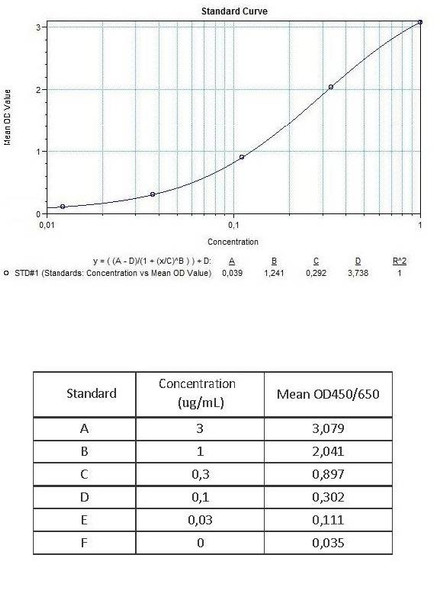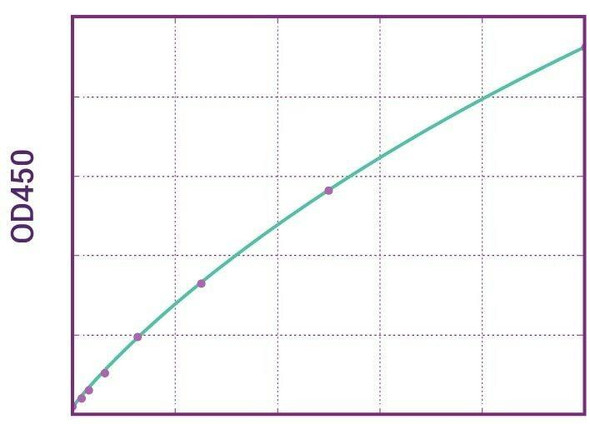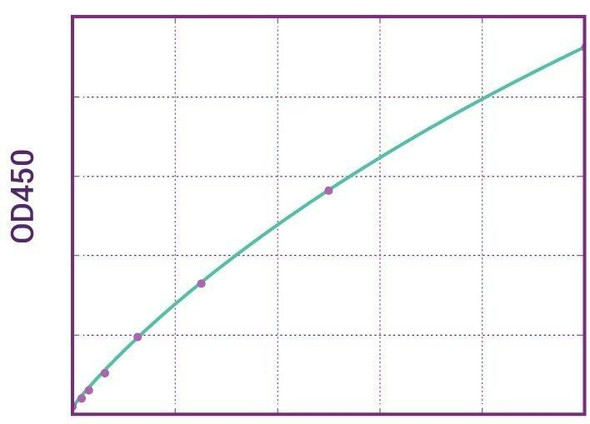Therapeutic Drug Monitoring
Anti-Nivolumab (Opdivo®)ADA Qualitative ELISA Kit
- SKU:
- HUMB00045
- Product Type:
- ELISA Kit
- ELISA Type:
- Biosimilar ELISA
- Biosimilar ELISA Type:
- Qualitative
- Applications:
- ELISA
- Reactivity:
- Human
- Analytes:
- Nivolumab (Opdivo®)
- Research Area:
- Checkpoint Inhibitors
Description
Anti-Nivolumab (Opdivo®) ADA Qualitative ELISA Kit
Enzyme-linked immunosorbent assay for the qualitative determination (screening) of antibodies to nivolumab (Opdivo®) in serum and plasma. The Assay Genie® Antibody to nivolumab (Opdivo®) Enzyme-Linked-Immunosorbent Assay (ELISA) Kit is intended for the qualitative determination of antibodies to nivolumab (Opdivo®) in serum and plasma. It is for professional use only.
Anti-Nivolumab (Opdivo®) ADA Qualitative ELISA Kit test principle
The Assay Genie Antibody to Nivolumab (Opdivo®) ELISA is a sandwich assay for the determination of anti-nivolumab antibodies in serum and plasma samples. During the first incubation period, antibodies to Nivolumab (ATN) in patient serum/ plasma samples are captured by the drug Nivolumab (Opdivo®) coated on the wall of the microtiter wells. After washing away the unbound components from samples, a peroxidase-labelled specific conjugate is added to each well and then incubated. After a second washing step, the bound enzymatic activity is detected by addition of tetramethylbenzidine (TMB) chromogen-substrate. Finally, the reaction is terminated with an acidic stop solution. The intensity of the reaction colour is directly proportional to the concentration of anti-nivolumab antibodies in sample
Anti-Nivolumab (Opdivo®) ADA Qualitative ELISA Product Information
| Information | Description |
| Application | Free drug |
| Required Volume (uL) | 10 |
| Total Time (min) | 140 |
| Sample Type | Serum, Plasma |
| Number of Assays | 96 |
| Detection Limit (ng/mL) | plus/minus |
| Spike Recovery (%) | - |
| Shelf Life (year) | 1 |
| Alternative Names | Human IgG4 monoclonal antibody Anti-PD-1 mAb Opdivo |
Anti-Nivolumab (Opdivo®) ADA Qualitative ELISA - Key Information
Nivolumab (Opdivo®) mode of action
Nivolumab is a fully human IgG4 monoclonal antibody that acts as an immunomodulator by blocking ligand activation of programmed cell death 1 (PD-1) receptor on T cells. Nivolumab binds to the programmed cell death 1 (PD-1) receptor and selectively blocks interaction with its programmed death ligands PD-L1 and PD-L2. Upregulation of PD-1 ligands occurs in some tumors and signalling through this pathway can contribute to inhibition of active T-cell immune surveillance of tumour tissue. The inhibitory effect of PD-1 and its ligands occurs through the promotion of apoptosis in antigen specific T cells while simultaneously blocking apoptosis in suppressor T cells. Blocking PD-1 activity has been shown to lead to decreased tumour growth in mouse tumour models.
Nivolumab (Opdivo®) uses
Nivolumab (Opdivo®) is indicated for use in patients with unresectable (cannot be surgically removed) or metastatic melanoma who no longer respond to other drugs. It is also used to treat metastatic squamous non-small cell lung cancer and is a second-line treatment for renal cell carcinoma after anti-angiogenic treatment has failed.
Nivolumab (Opdivo®) treatment
Nivolumab is administered as an intravenous infusion over 60 minutes every 2 weeks. Nivolumab is indicated for the treatment of unresectable or metastatic melanoma for patients who no longer respond to treatment with other drugs. It is intended for use in patients who have been previously treated with ipilimumab and is used for melanoma patients after treatment with ipilimumab and a BRAF inhibitor in patients whose tumors express BRAF V600 gene mutations. Historically there have been very few effective treatments for advanced melanoma, which is why this product was approved under an FDA accelerated program to allow earlier patient access.
Nivolumab (Opdivo®) immunogenicity
As with any biologic therapeutic, immunogenicity, in the form of anti-nivolumab antibodies can occur. The demonstration of anti-nivolumab antibodies during treatment with nivolumab is a major concern. The Assay Genie Anti-Nivolumab ADA Qualitative ELISA Kit can be efficiently used for monitoring anti-nivolumab antibodies during therapy and offers the clinician a tool for decision on possible preventive measures such as the potential addition of an immunosuppressive drug to reduce anti-nivolumab antibodies.
Anti-Nivolumab (Opdivo®) ADA Qualitative ELISA Kit Contents
| Size | Kit Contents |
| 1 x 12 x 8 | Microtiter Plate Break apart strips. Microtiter plate with 12 rows each of 8 wells coated with nivolumab |
| 1 x 0.25 mL | Reactive Control |
| 1 x 0.5 mL | Negative Control |
| 1 x 12 mL | Assay Buffer |
| 1 x 12 mL | Peroxidase Conjugate |
| 1 x 12 mL | TMB Substrate Solution |
| 1 x 12 mL | TMB Stop Solution |
| 1 x 50 mL | Wash Buffer concentrate (20x) |
| 2 x 1 | Adhesive Foil |
Anti-Nivolumab (Opdivo®) ADA Qualitative ELISA Protocol
| Steps | Protocol |
| 1 | Pipette 100µl of Assay Buffer non-exceptionally into each of the wells to be used. |
| 2 | QUALITATIVE ELISA TEST FORMAT Wells |
| 3 | Cover the plate with adhesive film. Briefly mix contents by gently shaking the plate. Incubate 60 min at room temperature (18-25°C). |
| 4 | Remove adhesive foil. Discard incubation solution. Wash plate 3 times each with 300µL of diluted. Wash Buffer. Remove excess solution by tapping the inverted plate on a paper towel. |
| 5 | Pipette 100 µL of ready-to use Peroxidase Conjugate into each well. |
| 6 | Cover the plate with adhesive foil. Incubate 60 min at room temperature (18- 25°C). |
| 7 | Remove adhesive foil. Discard incubation solution. Wash plate 3 times each with 300 µL of diluted Wash Buffer. Remove excess solution by tapping the inverted plate on a paper towel. |
| 8 | Pipette 100 µL of TMB Substrate Solution into each well. |
| 9 | Incubate 20 min (without adhesive foil) at room temperature (18-25°C) in the dark |
| 10 | Stop the substrate reaction by adding 100 µL of Stop Solution into each well. Briefly mix contents by gently shaking the plate. Colour changes from blue to yellow. |
| 11 | Measure optical density with a photometer at 450/650 nm within 30 min after pipetting of the Stop Solution. |
Trademarks
Opdivo is a registered trademark of Bristol-Myers Squibb Company.







